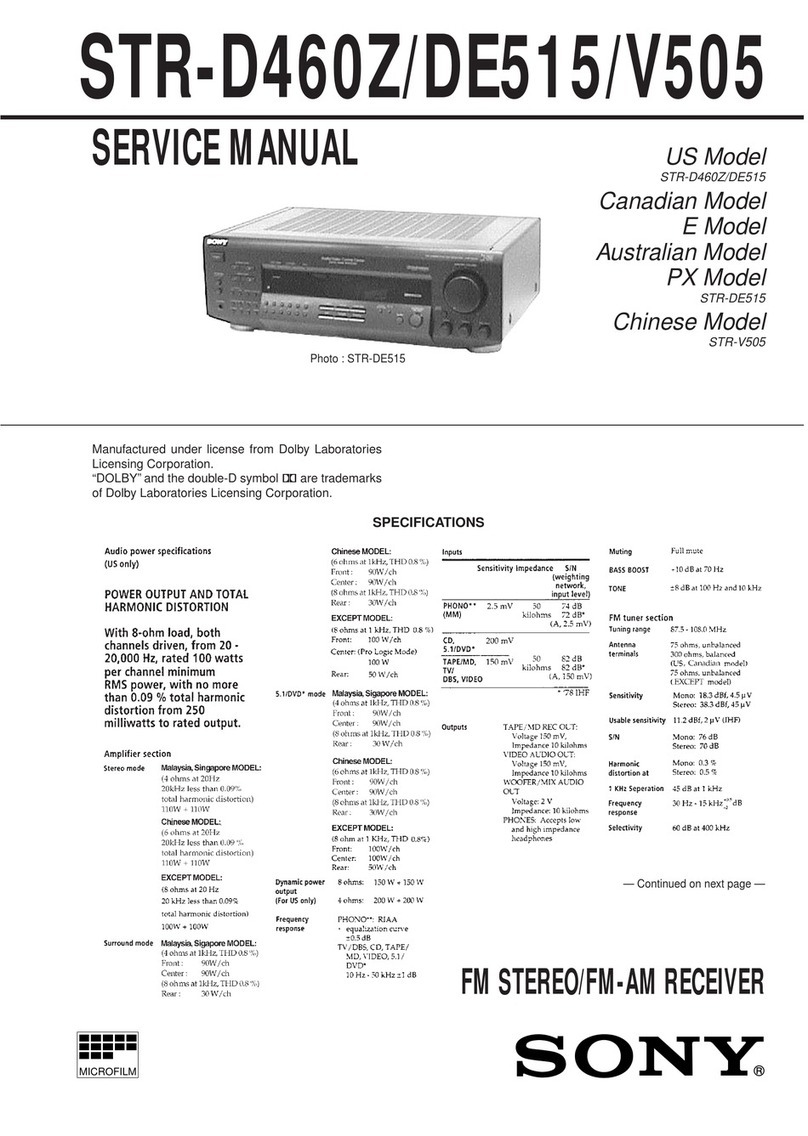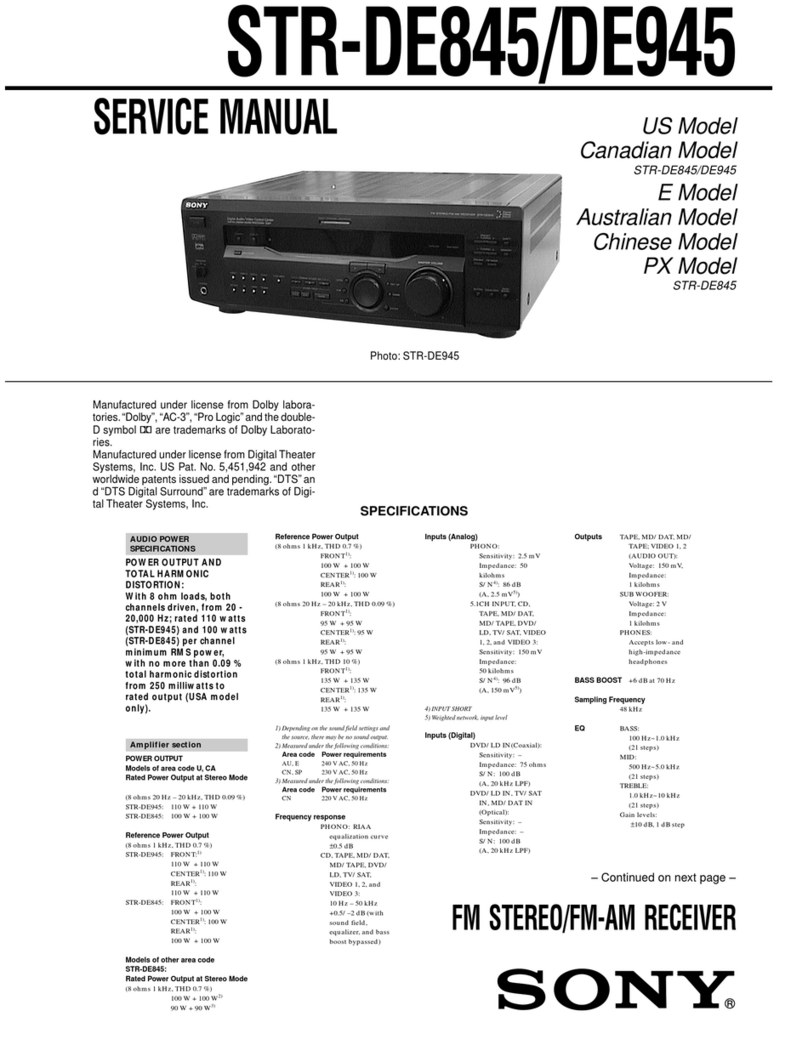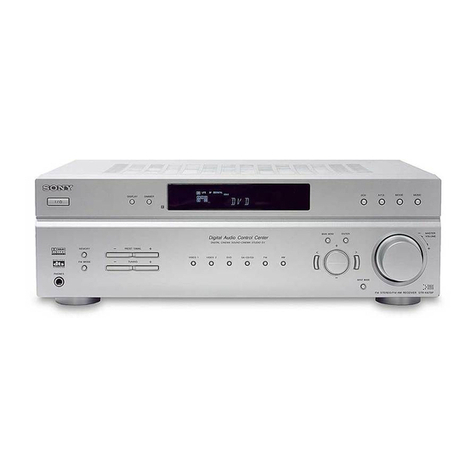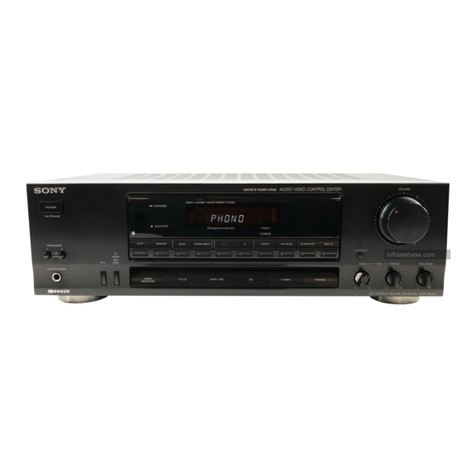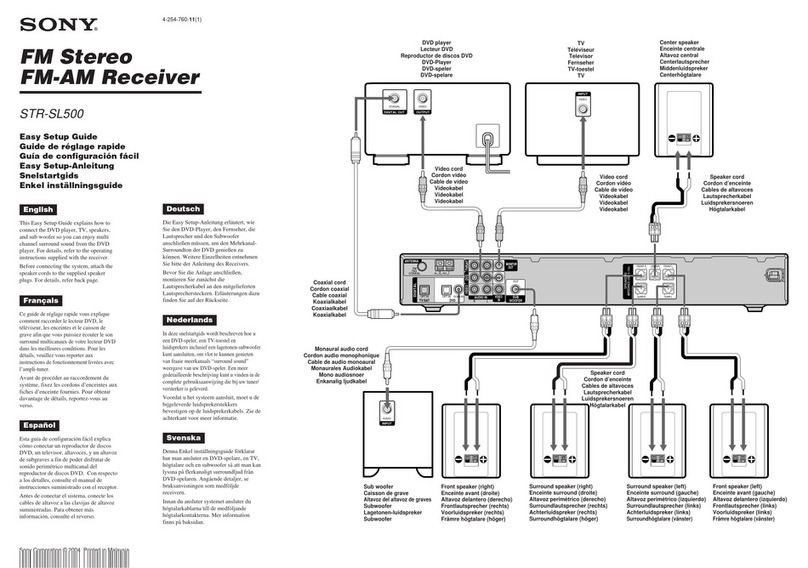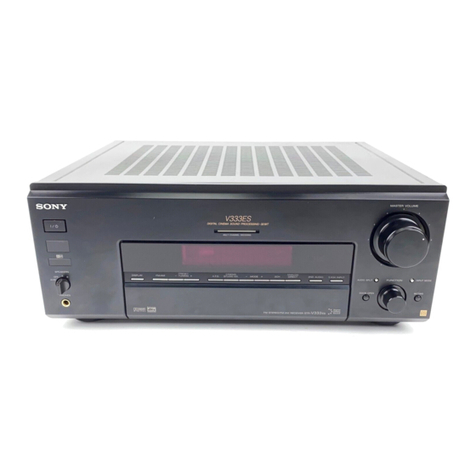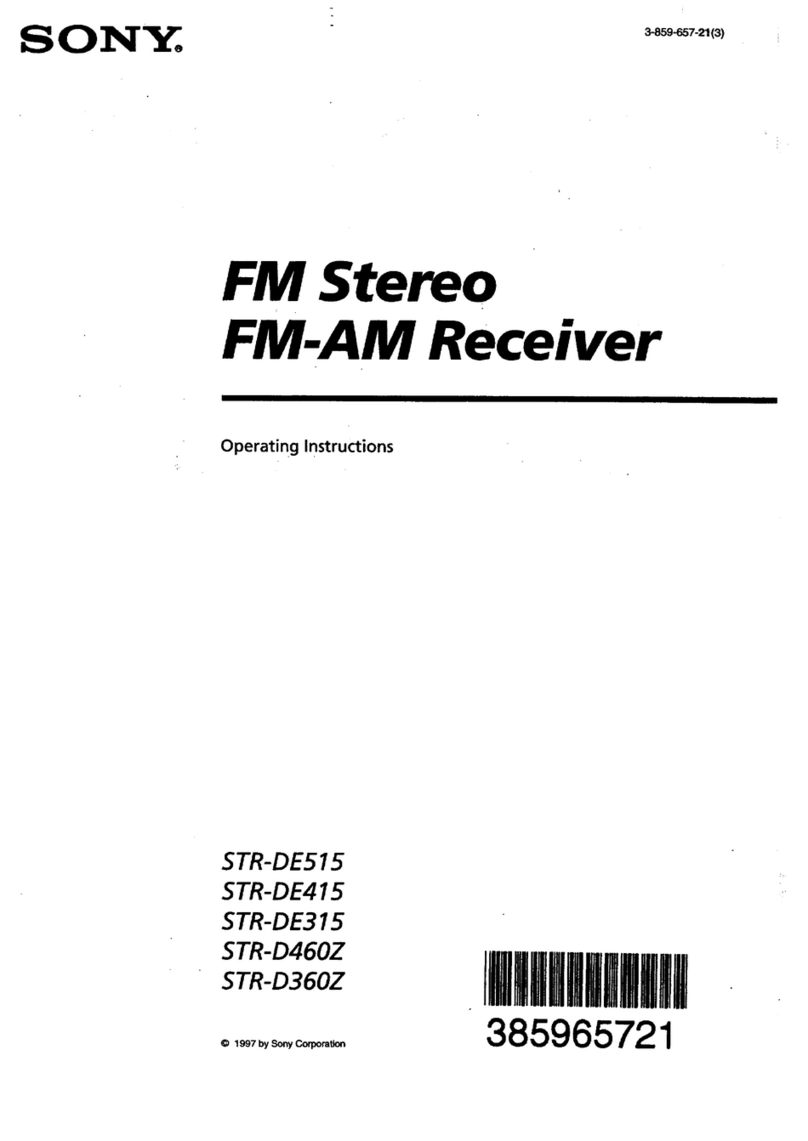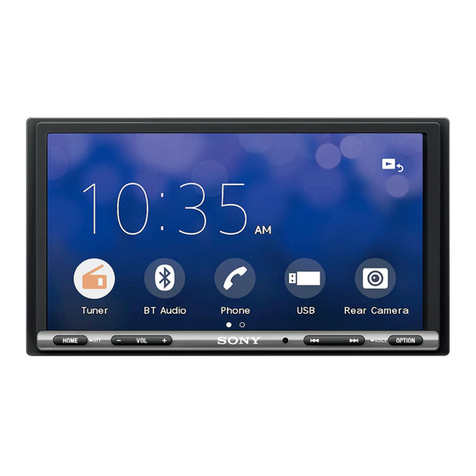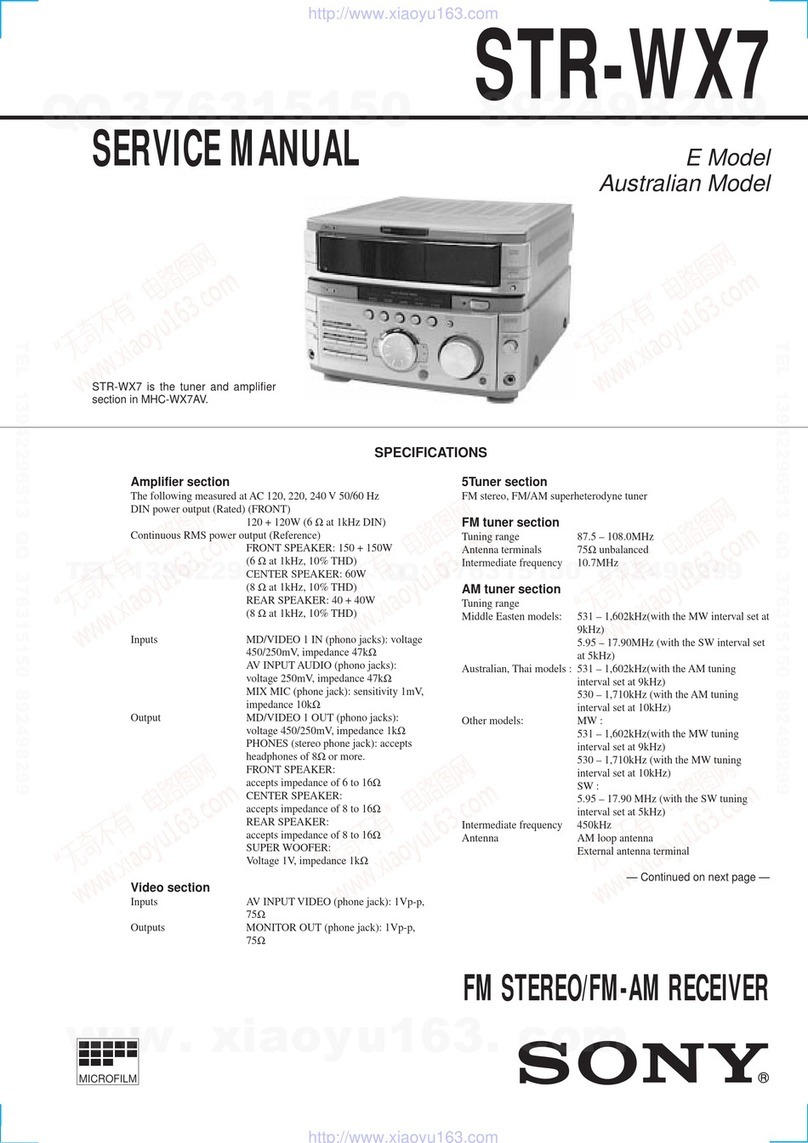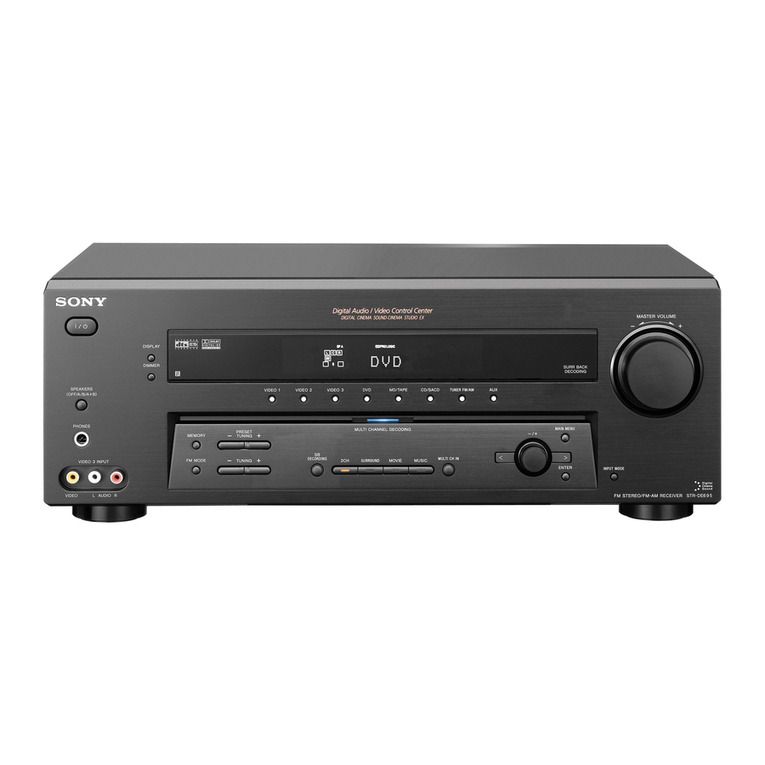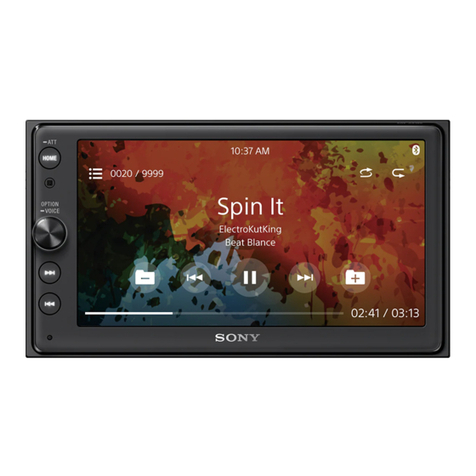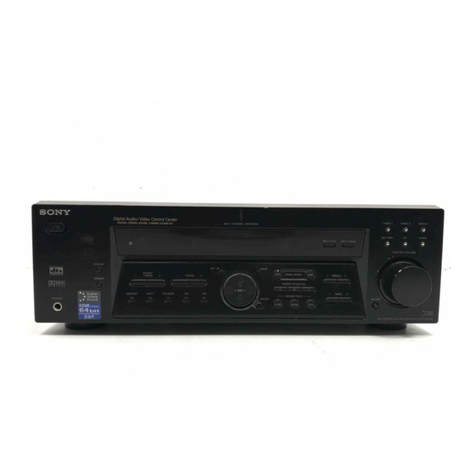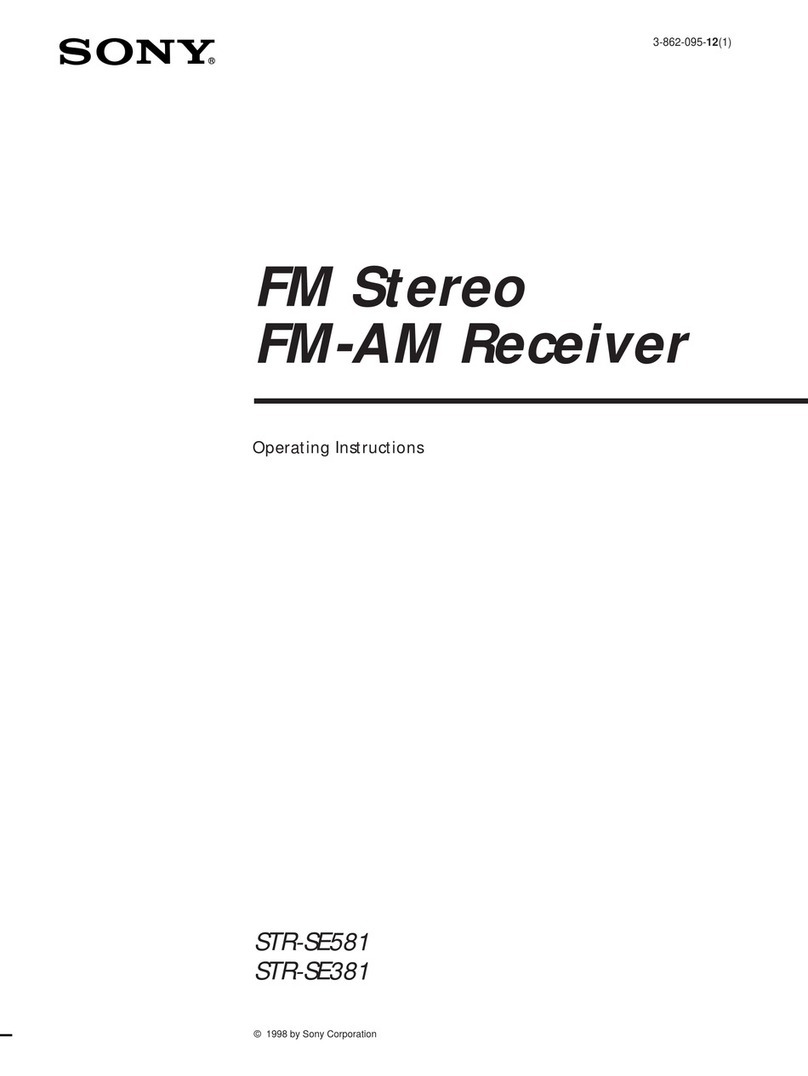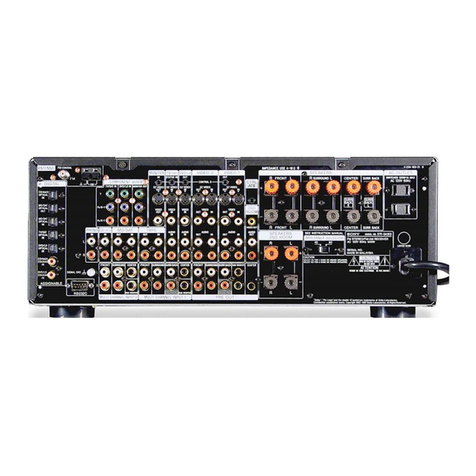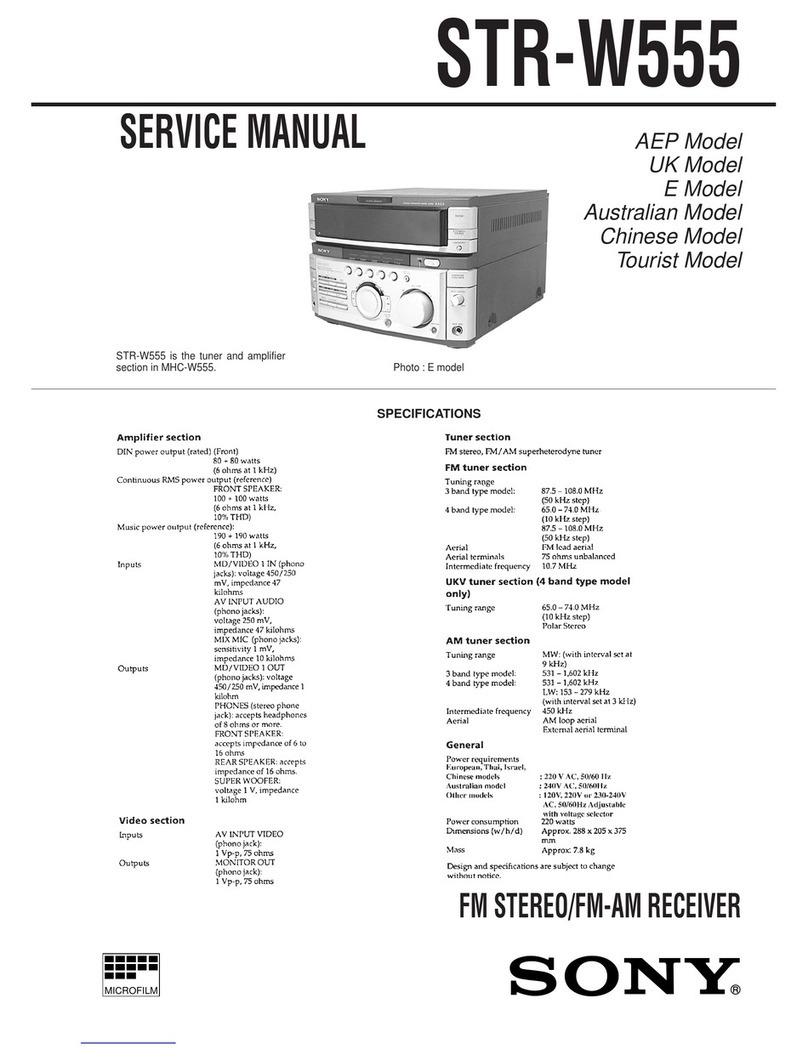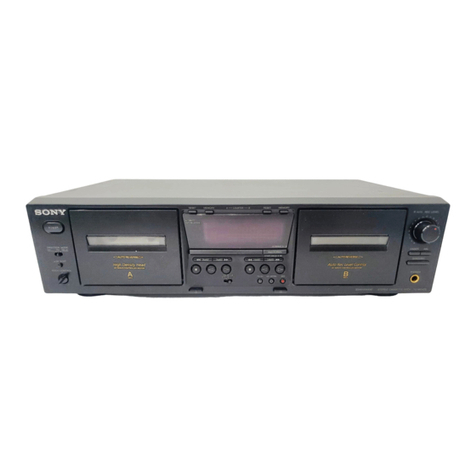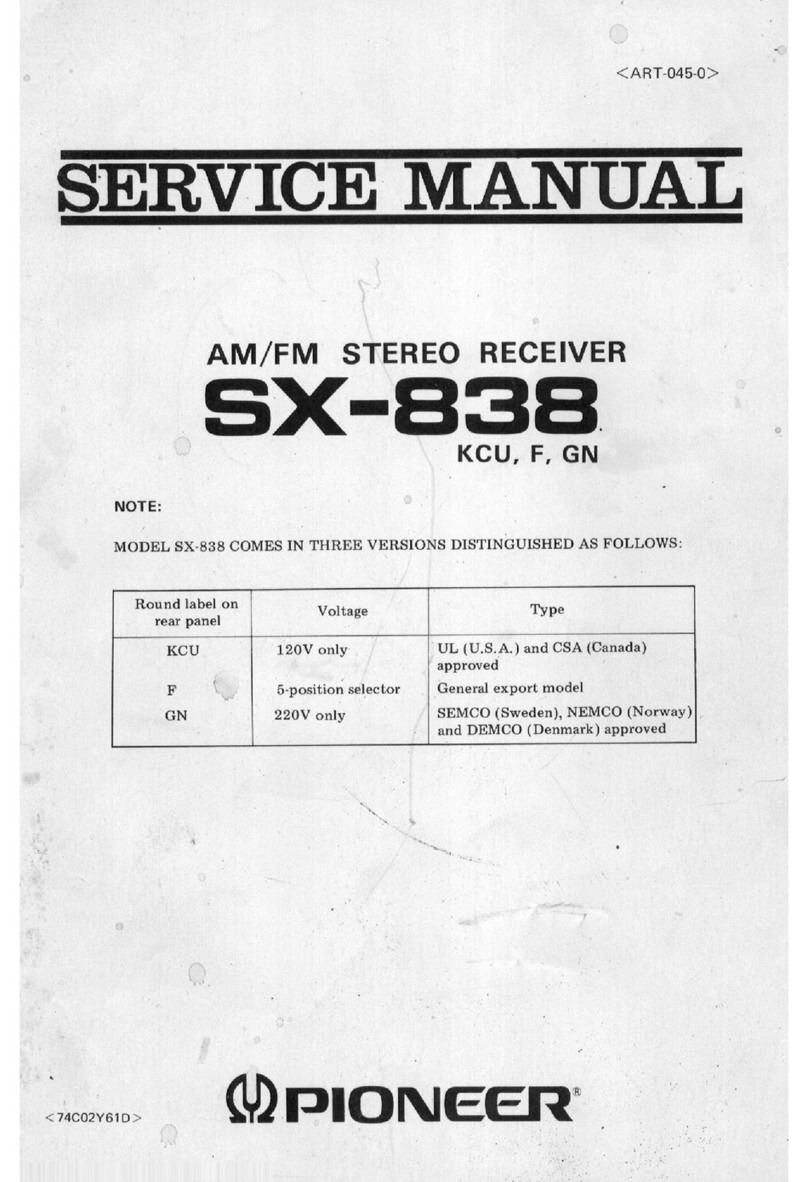5
TABLE OF CONTENTS
1. SERVICE NOTE ··························································· 6
2. GENERAL ······································································ 7
3. TEST MODE···························································· 9
4. ELECTRICAL ADJUSTMENT·························10
5. DIAGRAMS
5-1. Block Diagram
•Audio Section ································································· 11
•Video Section ································································· 12
•Digital Section ······························································· 13
•Power Amp Section ························································ 14
5-2. Circuit Boards Location ··················································· 15
5-3. Schematic Diagram –Digital (1/4) Section – ·················· 16
5-4. Schematic Diagram –Digital (2/4) Section – ·················· 17
5-5. Schematic Diagram –Digital (3/4) Section – ·················· 18
5-6. Schematic Diagram –Digital (4/4) Section – ·················· 19
5-7. Printed Wiring Board –Digital (Side A) Section – ·········· 20
5-8. Printed Wiring Board –Digital (Side B) Section – ·········· 21
5-9. Schematic Diagram –Digital IN/OUT Section – ············· 22
5-10. Printed Wiring Board –Digital IN/OUT Section – ·········· 22
5-11. Schematic Diagram –M-Bus Section – ··························· 23
5-12. Printed Wiring Board –M-Bus Section – ························ 23
5-13. Schematic Diagram –Input Section – ······························ 24
5-14. Printed Wiring Board –Input Section – ··························· 25
5-15. Schematic Diagram –Audio 2F Section – ······················· 26
5-16. Printed Wiring Board –Audio 2F Section – ····················· 27
5-17. Schematic Diagram –C-Video Section – ························· 28
5-18. Printed Wiring Board –C-Video Section – ······················ 29
5-19. Schematic Diagram –S-Video Section – ························· 30
5-20. Printed Wiring Board –S-Video Section – ······················ 31
5-21. Schematic Diagram –Power Amp Section – ··················· 32
5-22. Printed Wiring Board –Power Amp Section – ················· 33
5-23. Schematic Diagram –Front SP Section – ························ 34
5-24. Printed Wiring Board –Front SP Section – ····················· 35
5-25. Schematic Diagram –Display Section – ·························· 36
5-26. Printed Wiring Board –Display Section – ······················· 37
5-27. Schematic Diagram –DC Power Section – ····················· 38
5-28. Printed Wiring Board –DC Power Section – ··················· 39
5-29. IC Block Diagrams ··························································· 40
5-30. IC Pin Function ································································ 43
6. EXPLODED VIEWS
6-1. Front Panel Section ·························································· 50
6-2. Chassis Section ································································· 52
7. ELECTRICAL PARTS LIST ··································· 54
After correcting the original service problem, perform the fol-
lowing safety checks before releasing the set to the customer:
Check the antenna terminals, metal trim, “metallized”knobs, screws,
and all other exposed metal parts for AC leakage. Check leakage as
described below.
LEAKAGE
The AC leakage from any exposed metal part to earth ground and
from all exposed metal parts to any exposed metal part having a
return to chassis, must not exceed 0.5 mA (500 microampers). Leak-
age current can be measured by any one of three methods.
1. A commercial leakage tester, such as the Simpson 229 or RCA
WT-540A. Follow the manufacturers’instructions to use these
instruments.
2. A battery-operated AC milliammeter. The Data Precision 245
digital multimeter is suitable for this job.
3. Measuring the voltage drop across a resistor by means of a VOM
or battery-operated AC voltmeter. The “limit”indication is 0.75
V, so analog meters must have an accurate low-voltage scale.
The Simpson 250 and Sanwa SH-63Trd are examples of a pas-
sive VOM that is suitable. Nearly all battery operated digital
multimeters that have a 2V AC range are suitable. (See Fig. A)
SAFETY CHECK-OUT
(US model only)
To Exposed Metal
Parts on Set
0.15 µF1.5 kΩ
AC
Voltmeter
(0.75V)
Earth Ground
Fig.A. Using an AC voltmeter to check AC leakage.
Notes on chip component replacement
•Never reuse a disconnected chip component.
•Notice that the minus side of a tantalum capacitor may be dam-
aged by heat.


